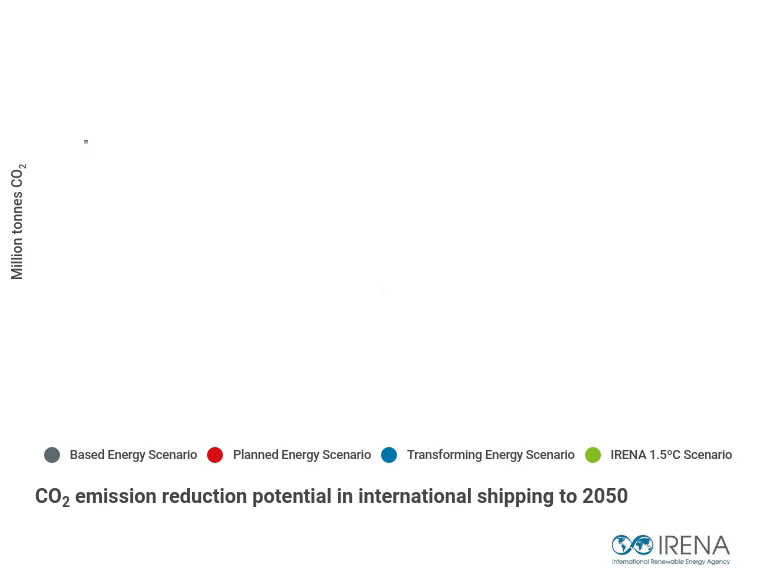A rapid replacement of fossil fuels with renewable fuels based on green hydrogen and advanced biofuels could enable to cut up to 80% of CO2 emissions attributed to international maritime shipping by mid-century, says an article published in Offshore Energy.
Pathway to decarbonizing
Renewable fuels should contribute at least 70% of the sector’s energy mix in 2050, IRENA’s “A pathway to decarbonize the shipping sector by 2050“ shows, outlining a roadmap for the global shipping sector in line with the global 1.5°C climate goal.
“Between 80% and 90% of international trade is enabled through maritime means. Decarbonizing global shipping is one of the most challenging sectors to address – and despite raised ambitions – current plans fall short of what is needed,” Francesco La Camera, IRENA’s Director-General, said.
Cutting CO²
“This IRENA outlook clearly shows that cutting CO2 emissions in such a strategic, hard-to-abate sector is technically feasible through green hydrogen fuels.”
‘‘Taking early action is critical. May this report encourage policymakers, ship owners and operators, port authorities, renewable energy developers, and utilities to work together towards common climate goals and show their ambition to world leaders at the UN climate conference COP26 in Glasgow,” La Camera added.
IRENA’s decarbonization
If the international shipping sector were a country, it would be the sixth- or seventh-largest CO2 emitter. IRENA’s decarbonization 1.5°C pathway is based on four key measures such indirect electrification by employing green hydrogen-based fuels, the inclusion of advanced biofuels, the improvement of vessels’ energy efficiency, and the reduction of sectoral activity due to systemic changes in global trade dynamics.

Cost falling
IRENA’s report flags that e-ammonia could represent as much as 43% of the sector’s energy needs in 2050, which would imply the use of about 183 million tonnes of renewable ammonia for international shipping alone, a comparable amount to today’s ammonia global production.
The report also finds that the production costs of alternative fuels and their availability will ultimately dictate the actual employment of renewable fuels. Moving from nearly zero CO2 emissions to net-zero requires a 100% renewable energy mix by 2050. While renewable energy costs have been falling at an accelerated rate, further cost declines are needed for renewable energy-derived fuels to become the prime choice of propulsion.
Did you subscribe to our newsletter?
It’s free! Click here to subscribe!
Source: Offshore Energy


























